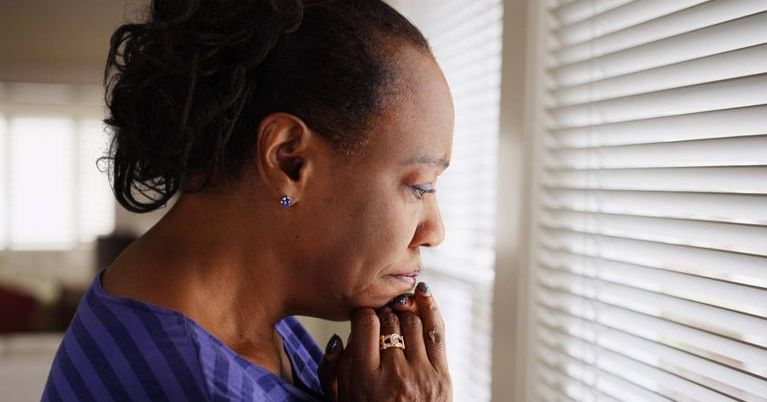
By Chris Farrell for Next Avenue
During a recent Minnesota Public Radio program I hosted about Social Security, I was surprised at the number of callers with questions and complaints about the program’s survivor benefits for widows and widowers.
One caller protested the “unfairness” of the benefits since she felt they ignored her own work years and contributions. Another worried that it was only by happenstance — reading an article — that she learned she qualified for benefits. “Widows should know about this,” she said.
So, let me try to explain what Social Security’s survivor benefits are, what they mean for widows and widowers and how President Joe Biden wants to enlarge and clear up confusion about them.
Biden’s Ideas for Social Security Survivor Benefits
Biden has proposed several reforms which, if enacted, would boost benefits for the surviving spouse, typically women. “Women live longer than men,” says Nancy Altman, president of Social Security Works, a Washington D.C.-based advocacy group.
A brief definition: When a married Social Security beneficiary dies, the surviving spouse qualifies for survivor benefits. Sounds simple enough. But experts agree survivor benefits are complex and poorly understood.
“There is confusion,” says Bob Carlson, author of “Where’s My Money: Secrets to Getting the Most Out of Your Social Security” and editor of the monthly newsletter and site, Retirement Watch. “The surviving spouse benefit is probably the most complicated in the Social Security benefit rules.”
The Goal of Social Security Survivor Benefits
Although the survivor rules may be complex, their goal is simple: To maximize the benefit to the surviving spouse since only one Social Security check is coming into the household at that point.
The size of the monthly Social Security survivor’s benefit is based either on the earnings history of the deceased spouse or the retirement benefit of the surviving spouse.
So, the first critical step for married couples to take regarding Social Security is factoring in potential survivor benefits when making decisions about claiming benefits.
“The biggest mistake couples make is not coordinating benefits,” says Carlson.
Social Security Claiming Advice for Married Couples
Carlson says a good starting place for married couples is for the higher-earning spouse to plan on delaying filing for Social Security benefits. That’s because a surviving spouse can collect 100% of the deceased’s benefit as long as the survivor has reached Full Retirement Age (which is between 66 and 67 these days).
The earliest you can file for Social Security retirement benefits is normally 62, although for widows and widowers it’s 60. But for every 12 months you delay claiming up to your full retirement age, your benefit increases by around 6%. Between your full retirement age and 70, the bonus benefit is 8% a year.
Typically, the lower-earning spouse files for Social Security first, while the higher-earning spouse with the bigger benefits waits. (You can’t qualify for spousal benefits if your spouse hasn’t claimed, though.)
Once one spouse dies, the widow or widower faces several choices. Both the survivor benefit and the standard retirement benefit increase if you delay taking them. However, the survivor benefit doesn’t rise after full retirement age.
The surviving spouse can choose which benefit is best to claim and switch later if he or she choose.
Here’s a Social Security survivor’s benefits example drawn from Carlson’s book:
Assume the surviving spouse is under 70. The surviving spouse should then compare the retirement benefit at 70 to the survivor benefit at the same age. If the survivor’s benefit is less than the retirement benefit at age 70, Carlson recommends taking the survivor benefit now and, at 70, switching to the retirement benefit. But if the survivor benefit is greater than the age-70 benefit, it may make sense to take the retirement benefit early and switch to the survivor benefit at 70.
Resources for Claiming Social Security Benefits
See how complicated this can be and why some widows and widowers get confused?
Fortunately, there are some useful resources you can tap to help claim Social Security benefits wisely.
Aside from Carlson’s book, there’s “Get What’s Yours: The Secrets to Maxing Out Your Social Security” by economist Laurence J. Kotlikoff and journalists Philip Moeller and Paul Solman. For a small fee, several online tools offer help maximizing survivor benefits: SocialSecuritySolutions.com, MaximizeMySocialSecurity.com and SocialSecurityChoices.com.
Biden would like survivors to generally have the option of collecting 75% of the combined Social Security benefit received by the household before one spouse died. This change would deal with the situation where the death of a spouse reduces Social Security payments by as much as 50% if both spouses had claimed and they had similar work and earnings histories.
Biden has another proposal that would help survivors living into their 80s or beyond. Social Security widows and widowers who have been claiming benefits for 20 years would get a bonus equal to 5%.
“The idea is: It’s a time when other assets may be exhausted and you may have increased medical expenses, so increase the benefit,” says Altman.
Whether Congress will agree to these ideas is anybody’s guess. In the meantime, married couples who haven’t yet filed for Social Security should work through possible claiming strategies by taking possible survivor benefits into account.
Chris Farrell is senior economics contributor for American Public Media’s Marketplace. An award-winning journalist, he is author of the books Purpose and a Paycheck: Finding Meaning, Money and Happiness in the Second Half of Life and Unretirement: How Baby Boomers Are Changing the Way We Think About Work, Community, and The Good Life.
